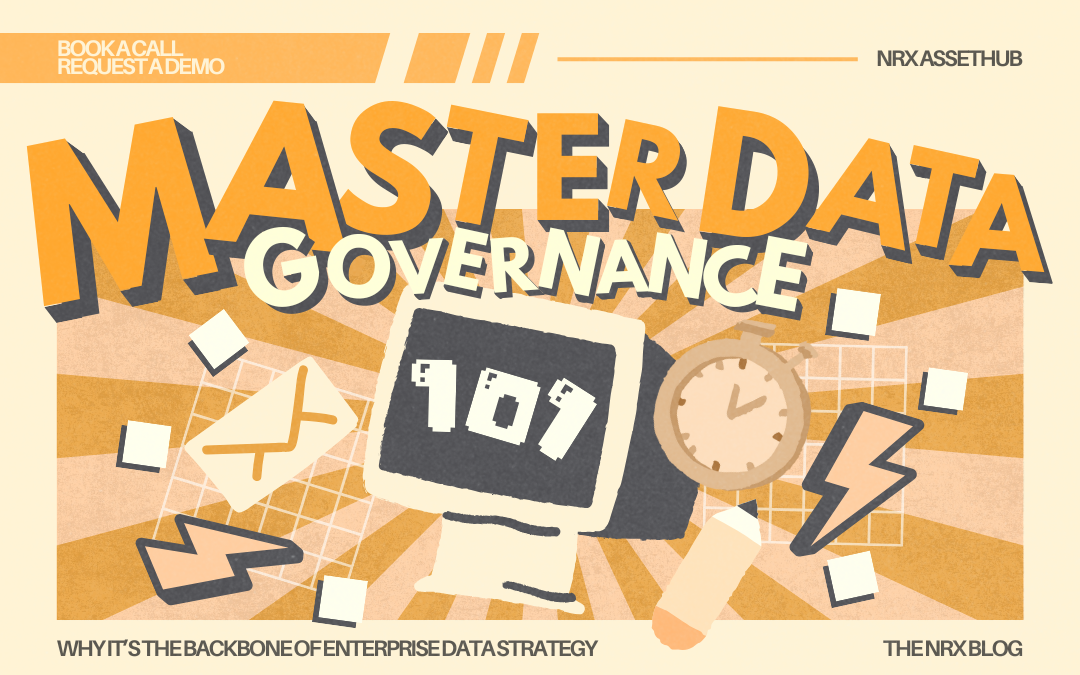According to Gartner, organizations believe poor data quality is responsible for an average of $15 million per year in losses. This staggering figure highlights the critical role of master data governance (MDG) in any enterprise data strategy. Today’s digital-first business environment is flooded with data. It flows across platforms such as EAM, CMMS, and digital twin technologies. However, without effective governance, that data becomes a liability instead of a strategic asset.

What Is Master Data Governance?
Master data governance refers to a set of frameworks, policies, and procedures. These are designed to ensure the accuracy, consistency, and security of core business data. This data, often called “master data,” includes information about assets, people, products, and locations (FLOCs). When properly managed, MDG enables all business functions to operate from a trusted source of truth. This includes activities such as preventive maintenance and supply chain logistics.
Popular platforms including IBM Maximo, Oracle EAM, and HxGN EAM rely heavily on high-quality master data. Organizations use this data to track, maintain, and analyze assets. Whether they are migrating legacy data to the cloud or creating new data models after a merger, MDG helps prevent costly errors that can spread across departments.

Why MDG Is Strategic, Not Just Technical
Importantly, MDG is not just an IT concern. It is an enterprise-wide strategy. Companies with robust MDG are better equipped to make informed decisions and comply with regulations. They are also more prepared to embrace innovation, including digital twin technology.
Consider an energy utility transitioning from a legacy CMMS to a modern EAM system. If asset hierarchies or maintenance records (PMs, FLOCs) are inconsistent, the migration may become error-prone and expensive. However, with proper MDG in place, the company can streamline the process and avoid downtime. This allows them to fully realize the benefits of digitalization.
The High Cost of Ignoring Data Governance
The costs of weak or absent MDG can be enormous. According to IBM, bad data costs the U.S. economy $3.1 trillion per year. These losses often result from operational inefficiencies, missed opportunities, and compliance failures. For EAM driven industries such as manufacturing or utilities, inaccurate asset master data leads to duplicate records, missed PMs, and compliance breaches.
For instance, several companies have previously found that inconsistencies in their asset registers across plants led to significant overstocking of critical spare parts. This inefficiency could have been prevented with proper MDG.
A Foundation for the Future
AI and automation are increasingly being used to monitor data quality, detect anomalies, and streamline governance tasks. Platforms such as SAP Plant Maintenance, IFS, and IBM Maximo now integrate AI tools that flag duplicate entries, outdated PMs, or incorrect FLOC associations in real time.
This is more than convenient. It is strategic. As organizations adopt digital twin models for real time asset monitoring, the success of these advanced analytics depends entirely on clean, consistent master data.
Master data governance is not optional. It is the connective tissue holding together the increasingly complex digital environments enterprises rely on. From smoother migrations to reliable compliance, and from operational efficiency to AI readiness, the returns on investing in MDG are too substantial to ignore.
Utilizing Drawing Data for Accurate Cost Estimation

The Challenges of Table Data Extraction

The Tedious Nature of Creating Piping Lists Manually

Share this article

